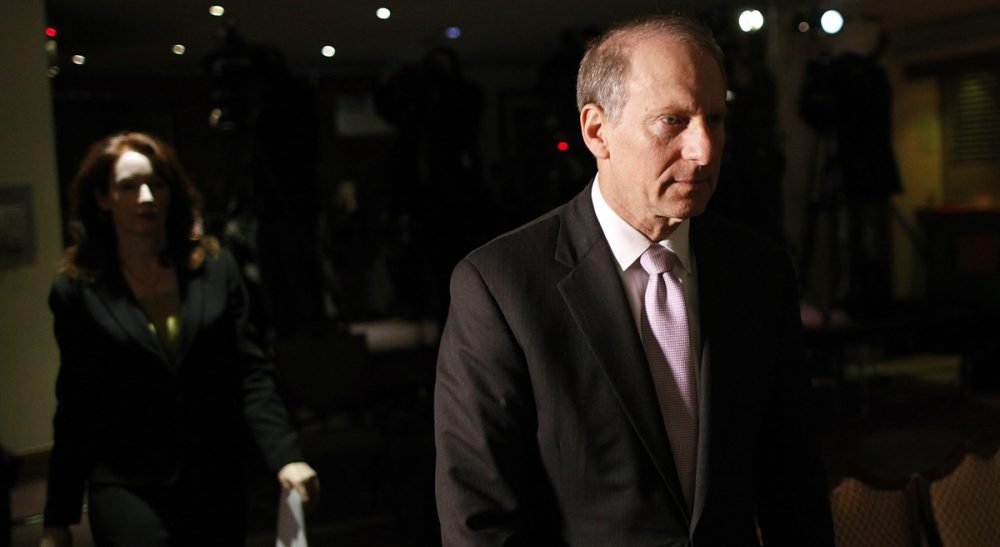Advertisement
Finding Peace In Northern Ireland

Northern Ireland was meant to be a success story. In a world wracked with sectarian conflict, the Good Friday Agreement of 1998 was held up as an example of how neighbors, entrenched in conflict, could end their mutual hatred by finding a shared vision for the future.
Yet when the latest round of peace talks failed recently, U.S. envoy Richard Haass was forced to fly home empty handed. This past year has proved the most violent year since the signing of peace accords for Northern Ireland. With young men rioting in the streets, attacking the police and each other, the fragile peace of the past 16 years appears to be slipping away.
Didn’t the Good Friday Agreement deal with this?
On the surface, the current problems are over the same sorts of symbolic issues — flags and parades — that I witnessed in the 1990s while working with senior Sinn Féin and Unionist political leaders. The Good Friday Agreement didn’t go far enough — and the current efforts to negotiate are applying the same conventional lens to political protocols, while doing little about the deeply held emotional identity divisions that remain. People do not kill each other over symbolic issues like the design of their flag. They kill each other when they feel their core identities, as they ascribe to that flag, are under threat.
Leaders must create the opportunities for each side to come together and deal with these underlying issues openly, to respect and address the competing identities and narratives, as well as convince each side to recognize their role in the legacy of violence. If done effectively, we can do more than just save another generation from violence — we stand to create a model for post-conflict reconciliation that can be applied across the globe, in conflicts such as in Iraq and Syria.
Leaders must create the opportunities for each side to come together and deal with these underlying issues openly, to respect and address the competing identities and narratives, as well as convince each side to recognize their role in the legacy of violence.
The first step is to rethink the celebrated Truth Commission concept, because it was not designed to deal with civil wars where most of the killings were civilian-on-civilian. Truth commissions were formed to deal with the legacy of dictatorship where the state was the source of most of the violence. The South African model of truth and reconciliation was built on the experience of Argentina and Chile, where the new democratic governments constantly felt the threat of another military coup.
Since then, truth commissions have become the international norm and the go-to approach for the international community and non-governmental organizations.
However, truth commissions won’t work everywhere, and in Northern Ireland, they would only attempt to pin blame on one side of the other, when in reality, the vast majority of violent acts were carried out and supported by civilians against each other. These acts were driven by a deep sense of alienation and perceived threat to core identities. To the perpetrator, the acts were justified, and may still be to this day. In fact, to many people, apologizing for violent acts would represent a betrayal of one’s own experience and community.
Advertisement
These situations exist elsewhere, such as in Iraq, where sectarian attacks in Baghdad became so intense in 2006 and 2007 that Iraqis carved up streets with concrete blast walls and check points to protect themselves from neighbors they had previously lived alongside for years.
Leaders must understand that in deeply divided societies emerging from a legacy of violence, there are always many truths shaped by very different, yet equally traumatic experiences. To understand doesn’t mean to forgive. But we must create opportunity for each side to acknowledge the others’ actions in the context in which they happened.
This is not to whitewash acts of violence, but to recognize the reality that traumatized humans cannot reason rationally until they feel their identities are understood and valued by others.
And this is based on science. Neuroimaging technology, for example, is identifying the brain regions associated with closely held ideas and values, and showing that our brains experience social rejection in the same part of the brain we experience physical pain. If the flag represents an identity that is held so closely it’s considered sacred, than we begin to understand why trying to change that flag — or burn or destroy it — provokes a strong defensive reaction. It’s impossible to talk openly, and negotiate fairly, if one side feels under threat. Only when people feel the threat to their core identity is removed can they be open to compromise and negotiation.
Openly addressing the role of emotions is often seen as irrelevant, or secondary to seemingly more immediate issues such as demobilization of combatants and police reform.
However, underlying tensions and hatred do not disappear with a peace agreement alone. It’s time we recognize that a political deal is not enough for Northern Ireland. We need a more nuanced and appropriate strategy. Anything less will not be enough.
Timothy Phillips is the author of the new book, "Beyond Conflict: 20 Years of Putting Experience to Work for Peace."
